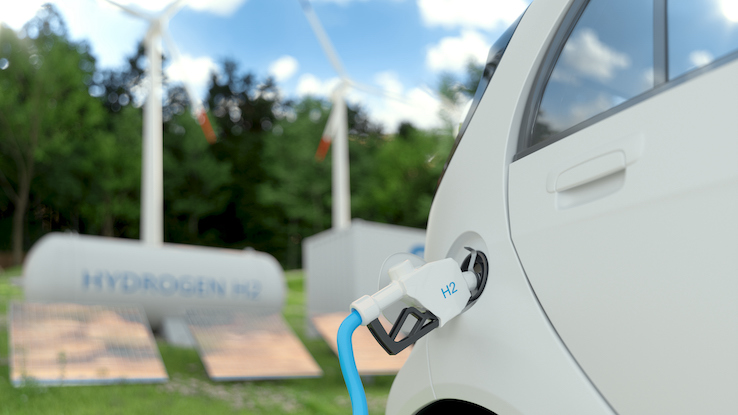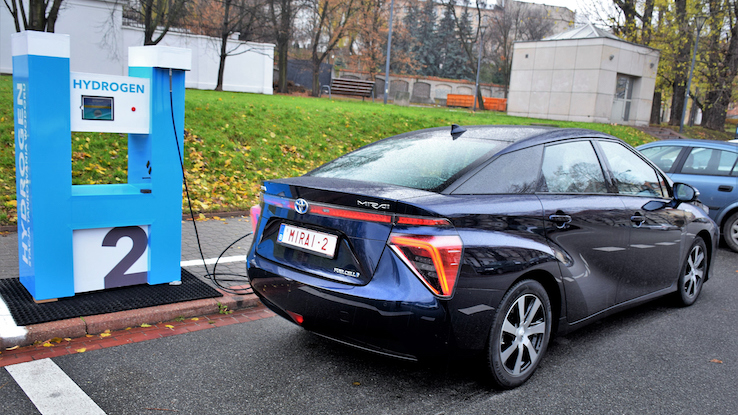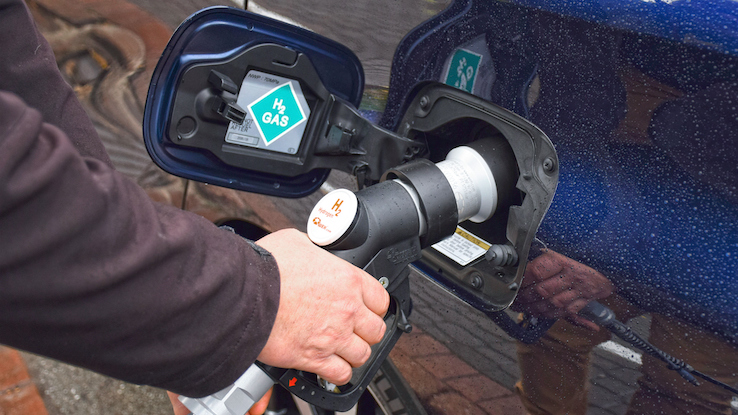Are Hydrogen-Powered Vehicles the Future of Clean Energy?

While automobiles are undoubtedly one of the greatest inventions in modern history, their reliance on gasoline has become a global issue. The mass burning of fossil fuels worldwide has struck a blow to our environment, leaving science scrambling for alternative power sources.
While hybrids and electric cars are a great step in the right direction, science may have an even better solution in the form of hydrogen-powered fuel cells. Join us for a look at hydrogen-powered vehicles, what they are and how they work.
What Are Fuel Cell Electric Vehicles (FCEVs)?
While today’s hybrid and electric vehicles are better than traditional gas-guzzling vehicles, they still have drawbacks. For one, they rely on electric batteries, which require periodic charging. Fuel cell electric vehicles or FCEVs may offer a quicker, cleaner path to the future.
While FCEVs are also powered by electricity, it’s produced by an onboard hydrogen fuel cell rather than a rechargeable battery. Whereas many of today’s electric cars have to be plugged in, the typical FCEV can be refueled in just a few minutes, like a traditional gas-powered car.
The difference is that, instead of fossil fuels, an FCEV’s tank is filled with pure hydrogen gas. Through the magic of chemistry, the fuel cell can convert the hydrogen to electricity, which in turn powers the vehicle.
Why Are FCEVs Cleaner Than Gas-Powered Vehicles?
According to the U.S. Department of Energy, about half the people in the United States currently live in an environment where the air pollution level is high enough to produce negative health effects. Not only does this have huge implications for public health, but also the environment.

Unfortunately, these statistics are not surprising considering the amount of fossil fuel emissions constantly being released into the air by gas-powered vehicles. Regardless, many people have long felt they had no choice but to continue using gasoline as the trade-off for reliable transportation.
One of the biggest potential strengths of FCEVs is that they can virtually eliminate these harmful tailpipe emissions. Rather than releasing carbon dioxide emissions, there are already FCEVs on the road today that emit nothing more than warm air and water. If used on a global scale, such FCEVs could have a massive impact, cutting down on everything from smog to climate change.
The Economic Benefits of FCEVs
Aside from the harmful environmental effects of gasoline reliance, one of the other major drawbacks of fossil fuel has always been that it’s nonrenewable. In other words, there’s only so much of it we can tap into before we use it all up completely. Then, of course, there’s the inconvenient reality that you can’t find fossil fuels just anywhere.
Although the United States has one of the biggest oil and natural gas reserves in the world, the U.S. still regularly uses more oil than it produces. This has historically led to dependence on foreign oil, which has tricky political and economic implications.
So how does hydrogen stack up? It just so happens to be the most abundant element on Earth and can be produced domestically. According to the Department of Energy, “When used to power highly efficient fuel cell electric vehicles, hydrogen holds the promise of helping strengthen national energy security, conserve fuel, and diversify our transportation energy options for a more resilient system.”

Availability and Range of Hydrogen-Powered Cars
While it’s already possible to purchase a hydrogen-powered car, it may not be the best idea unless you live in one of the few states in the U.S. that currently have hydrogen fueling stations. Most of these initial stations are located in California — a fact that has presented a roadblock in generating interest in FCEVs on a national scale. After all, what’s the point of buying a new vehicle if you don’t have access to the fuel you need to power it?
But that hasn’t stopped several major auto manufacturers from developing their own FCEVs, hoping that they’ll become more widespread in the future. BMW, Toyota and Hyundai are just a few auto companies worldwide that have already ventured into the hydrogen-powered car space.
As far as fuel economy, some FCEVs already enjoy the equivalent of up to 70 miles per gallon on a single tank and offer an impressive mileage range. According to some auto manufacturers, the future is looking even brighter, as there are hydrogen cars in development designed to get up to 500 miles on a single tank.

The Challenges of Hydrogen-Powered Vehicles
At this point, you may be wondering, if trading in fossil fuels for hydrogen is such a great idea, why haven’t we done it yet? Unfortunately, the leap to hydrogen fuel isn’t going to be an overnight solution. There are still several key challenges that science is attempting to overcome, one of which revolves around producing hydrogen fuel on a mass scale.
One drawback of hydrogen is that, despite its abundance, it doesn’t occur naturally except as part of a compound. That means that it’s always attached to some other element in its natural state. Water, for instance, is a combination of hydrogen and oxygen (H2O). To use the hydrogen in a barrel of water for fuel, we’d first have to separate it from all the oxygen in the barrel.
Ironically, some of the most obvious ways to generate the electricity needed to separate the hydrogen currently involve using coal or natural gas. In other words, creating clean hydrogen fuel can end up producing just as much pollution as it’s designed to eliminate.
That said, scientists are hopeful that we’ll someday cut fossil fuels out of the transportation equation entirely. The hope is that hydrogen production will ultimately rely on electricity generated by wind, solar, biomass and hydro-power.





